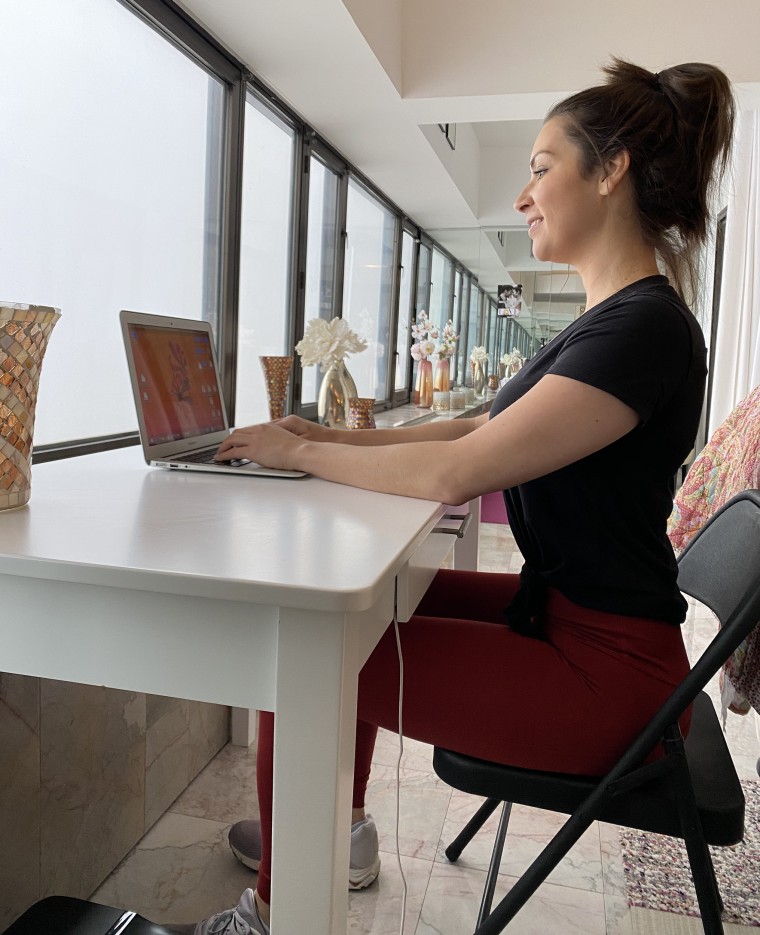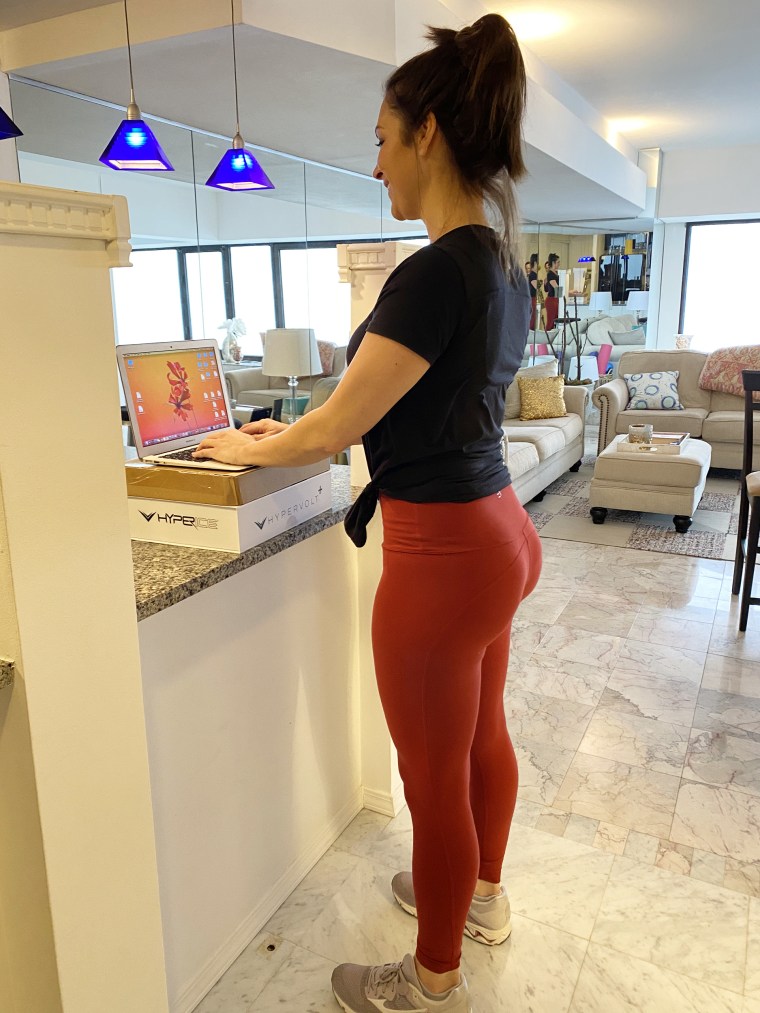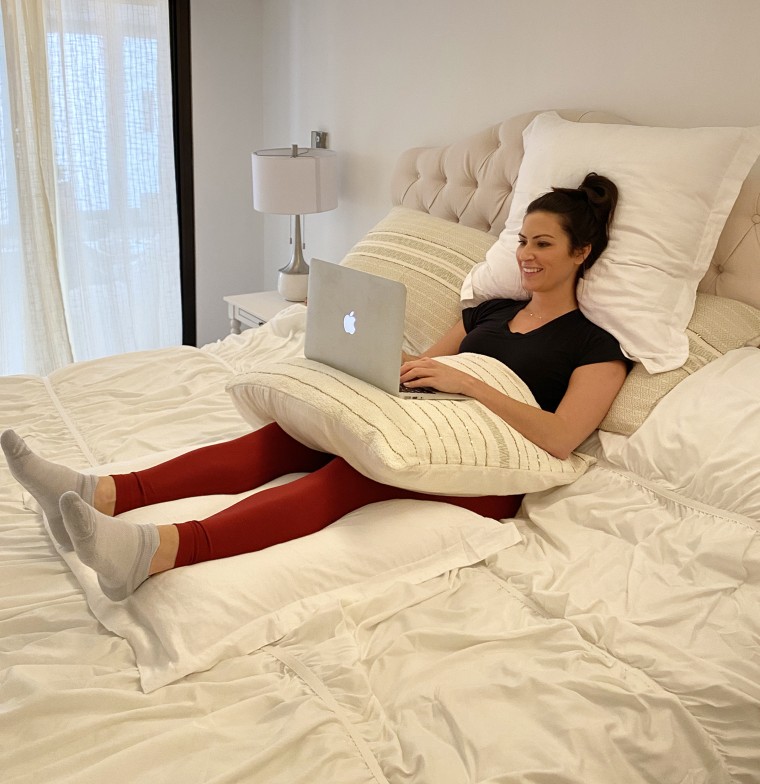Are you stuck inside, trying to work remotely while intermittently checking for the latest coronavirus updates?
Working from home is the best option to keep everyone safe, but it can wreak havoc on your body. A stiff neck, sore back, tingling in your wrists or arms are just a few of the ailments that can strike if you don’t have a healthy home office setup. But don’t worry, as a trainer, I have a few tips to help you set up your new workstation to avoid these aches and pains!
Many of my private personal training clients are saying they don’t have the right chair — and some are admitting to lying in bed or on the couch with their laptops. When they stand up after a few hours, they feel super stiff. Sitting or standing is the best option to fully support your body, but there are also good ways to to support your body while working from a lying down position.
In addition to my tips, I’ve added the locations in your home where you can work in each position, as well as ways to “step it up” and maximize your time in these different positions. Check out my demonstrations in the video above.

Seated Options
The most traditional work-from-home position can be improved easily with a few tweaks. When seated:
- Keep 90-degree angles throughout the body.
- Sit upright in a chair that allows your feet to be flat on the ground.
- Bend your knees at 90 degrees.
- Have your arms resting at 90 degrees.
I personally sit on a folding chair at my desk because it allows me to sit upright, forces me to engage my abs (by pulling my naval in towards my spine to support my lower back) and keeps my shoulders back so they’re underneath my ears.
Locations: Dining room table, chair at a desk, kitchen countertop, living room ottoman, a fitness ball anywhere
Step it up: Squeeze your shoulder blades together to prevent hunched shoulders. Pull your abs in like you’re trying to squeeze into a tight pair of pants — this supports your low back. Straighten your legs every few minutes to stretch the backs of the legs. Shake out your wrists after a few emails to loosen up the forearms and undersides of the wrists.

Standing Options
Standing up is a great option and burns more calories than sitting. Here’s how to do it right:
- Press down evenly with both feet.
- Stand with your feet hip-distance apart.
- Rest your arms at 90 degrees at the counter or the table.
You may need to stack books or boxes on your countertop or table in order to get your arms at a 90-degree angle.
One common mistake here is shifting and resting on the right foot and hip more than the left side. If you do this, make sure to even it out and shift to the left side, too.
Locations: Dining room table, kitchen countertop, dresser in the bedroom
Step It Up: Squeeze your butt with pulses. Do it for an extended period to tone while standing. Perform calf raises to work the lower legs. Look up after a few emails to stretch the throat and front of the chest.

Lying Options
This is the most troublesome position of all, but many of us will end up working this way! If you’re going to do it, be sure to:
- Prop up your knees by putting a pillow underneath them.
- Prop your head and upper back up with pillows.
- Place another pillow on your lap to rest your computer on (or use a lap desk).
- Try keeping the arms bent at a 90-degree angle.
Allow your body to sink into the pillow for support and relax your shoulders.
Locations: Bed, couch, floor
Step It Up: Point and flex your feet to stretch the toes and calves. Turn your head to the right, then left, to stretch after completing a project.
